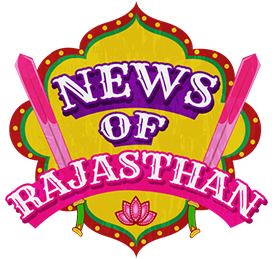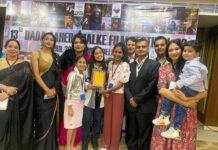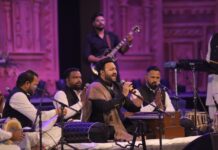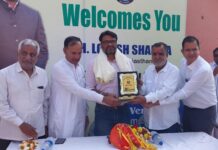
BUNDI FESTIVAL (17-19 NOVEMBER)
The Bundi Festival is celebrated in the month of Kartik (October-November) and includes several spiritual and traditional activities. It is a remarkable cluster of traditional art, culture and craftsmanship and visitors are left charmed by its magnificence. The program includes a colourful Shobha Yatra, arts & crafts fair, ethnic sports, cultural exhibition, classical music & dance program, turban competitions, bridal clothing, musical band competitions, and a sparkling fireworks display. Early in the morning, after the full moon night of Kartik Purnima, women and men clad in attractive colourful costumes lightdiyas or lamps on the banks of River Chambal and seek blessings.
EXPLORING BUNDI (THE CITY OF STEPWELLS)
It is popularly believed that Nobel laureate Rudyard Kipling penned part of his famous novel ‘Kim’ in Bundi. In fact, so impressed was he by the place, that this is what he wrote about the Bundi palace:
‘Jaipur Palace may be called the Versailles of India … Jodhpur’s House of strife, gray towers on red rock, is the work of giants, but the Palace of Bundi, even in broad daylight, is such a palace as men build for themselves in uneasy dreams – the work of goblins rather than of men.’
Dotted with palaces and forts, the place has a fairy tale quality about it. Bundi’s charm lies in its location –surrounded by orchards of orange, guava, pomegranate and mango trees, flanked by the Aravalli range and rivers and lined by fields of cotton, barley and wheat. Situated far from the crowds, it is the simple rural folk that lend Bundi its allure.
Bundi was once ruled by the Hada Chauhans. Many historians claim that it was once the capital of the great Hadoti Kingdom, which was renowned for its art and sculpture. However, in 1624, Kota separated and became an independent state and this marked the beginning of the downfall of Bundi. Whether that may be, Bundi still retains its charismatic medieval grandeur. And just like Jodhpur and Rajput, the architecture of Bundi also possesses a noticeable bluish hue, designed to keep houses cool during hot summer, in the intricately carved brackets and pillars.
HISTORY
Back in 1193 A.D. when Prithviraj Chauhan was defeated by Mohammed Ghauri, some of the Chauhan nobles took shelter in Mewar and became allies to the Rana. Other young warriors of the faction moved towards the Chambal Valley and overpowered the Meena and Bhil tribes and established their own kingdom of Hadoti. Still later, two branches of the Hadas formed the separate states of Kota and Bundi on either side of the Chambal River.
ATTRACTIONS & PLACES TO VISIT AND EXPLORE IN BUNDI
SUKH MAHAL
A magnificent summer palace on Jait Sagar amid the lush surroundings of a beautiful garden. An underground tunnel is believed to run from Sukh Mahal to the old palace. Sukh Mahal, a small, two-storied palace was a summer retreat of past rulers. Today, it is quite famous for being the place where Kipling wrote ‘Kim’. Many credit the palace as a having played muse to the renowned novel. In fact, part of a movie based on the novel was even shot here.
KSHAR BAG
Located near the Chhatra Vilas Garden, Kshar Bag, sometimes known as Saar Bagh, houses the memorial cenotaphs of the royal family of the Bundi state. It is located on the Shikar Burgh Jait Sagar Road.
RANIJI KI BAORI (THE LARGEST STEPWELL IN BUNDI)
The town of Bundi is renowned for its baoris, or stepwells. Raniji ki Baori (Queen’s stepwell) is the largest among the over 50 baoris that dot the town. Baoris were commissioned by the ruling royalty to take care of water needs during the months of drought. This baori was constructed in 1699 by Rani Nathavati Ji, the younger queen of the ruling Maharao Raja Anirudh Singh of Bundi. 46 metre deep, this stepped well is a multi-storeyed structure decorated with brilliantly-carved pillars and a high-arched gate. Each floor has dedicated places of worship for the people to pay homage. One can enter the baori through a narrow doorway marked by four pillars. Lifelike elephant statues made of stone guard the corners. The baori is a medieval marvel of construction and design. Baoris also worked as social assembly areas in those times since local townsfolk gathered here often.
DABHAI KUND
Shaped like an inverted pyramid, the Dabhai Kund, also known as Jail Kund, is the largest of its kind in Bundi. The fantastic carvings on the steps that lead to the water alone are reason enough to warrant a visit.
NAGAR SAGAR KUND
Located outside the Chauhan Gate, the Nagar Sagar Kund, a set of twin step wells, was constructed to provide water during times of famine.
TARAGARH FORT OR THE STAR FORT
Built in 1345 A.D, Taragarh is one of the most impressive structures in Bundi. While it may be a bit ramshackle and strewn with overgrown vegetation, the palace grounds are a great place for a leisurely stroll. With its curved roofs topping pavilions, excess of temple columns and elephant and lotus motifs, the palace is a tribute to Rajput style.
84 PILLARED CENOTAPH
As the name suggests, the 84 Pillared Cenotaph is a structure supported by 84 columns. Commissioned by Rao Anirudh, the Maharaja of Bundi, this cenotaph is a tribute to his beloved wet nurse, Deva, who he loved dearly. A popular tourist attraction, this impressive structure is decorated with carvings of deer, elephants and apsaras.
CHHATTAR MAHAL OR PALACE OF TOWERS
A steep, paved carriage-way is the only way to reach the monument. Of special interest in the palace is the Hazari Pol or Gate of the thousand, the Naubat Khana, the Hathi Pol with its old water clock, the Diwaan-e-Aam and Throne Room.
RATAN DAULAT
Built by Rao Raja Ratan Singh, it is a very interesting structure forming a stable for nine horses and a Hatia Pol. (Prior permission required for visit).
CHITRASHALA
A fascinating pavilion and a gallery of miniature murals embellish the palace. Elaborate colourful paintings on the walls depict scenes from the ‘Ragamala’ and ‘Raaslila’ the Radha-Krishna story.
LAKE JAIT SAGAR
Located close to the Taragarh Fort, this picturesque lake is surrounded by hills and covered with pretty lotus flowers that bloom during winter and monsoon.
LAKE NAWAL SAGAR
Nawal Sagar Lake is an artificial lake that is a major tourist attraction and can even be seen from the Taragarh Fort. There is a half-submerged temple dedicated to Lord Varun Dev in its centre. What makes the lake unique is that one can see the reflection of nearby palaces and forts in its waters.
LAKE KANAK SAGAR
About 67 kilometres from the town of Bundi lies this wonderful flat lake. There is also a town named after the lake. One can spot several migratory birds here such as bar headed goose and Demoille cranes all through the year.
RAMGARH VISHDHARI SANCTUARY
Ramgarh Vishdhari Wildlife Sanctuary is located 45 kilometres from Bundi on the Bundi-Nainwa road. Covering an area of 252 sq. km., this sanctuary is home to a variety of flora and fauna. Established in 1982, it forms a buffer for Ranthambore National Park. The best time to visit is between September and May.
PHOOL SAGAR
A personal property of the descendants of the royal family, this artificial lake gets its name from the palace on its banks. This palace houses an exclusive collection of paintings created by Italian prisoners. Beautiful gardens surround it and the lake. Make sure you obtain special permissions required to explore the palace and its grounds.
HOW TO REACH HERE
The nearest airport is Sanganer Airport in Jaipur which is about 206 kms away. Bundi is a magnificent town located around 36 kilometres from Kota.
Buses to Bundi are available at regular intervals from Ajmer, Bijolia, Bikaner, Chittorgarh, Jaipur, Jodhpur, Kota, Sawai Madhopur and Udaipur.
The railway station is located about 4 kilometres south of the old city. There are railway connections between Bundi and Chittorgarh.
WHERE TO STAY
RTDC Hotel Vrindavati, Circuit House, The Hadoti Palace, Ishwari Niwas, Bundi Palace, Bundi Haveli Hotel, Royal Retreat, Umaid Bag Hotel Sumalka etc. A wide choice of other accommodation and Paying Guest accommodation is also available.
DINING
RTDC Hotel, Diamond Hotel, Punjab Hotel, Sher-e-Punujab Hotel, circuit House, Ishwari-Niwas, Santosh Bhojnalaya, Dwarika Hotel, Bundi Tourist Palace Hotel.
SAFARI ON CHAMBAL RIVER
The gods have been very kind to the city of Bundi and have blessed it with life-giving water of the Chambal River and lots of bright sunshine. A visit to Bundi must include a river safari. Chambal River runs through deep gorges and high-rise mud walls, gurgling falls and pebbled ruffles.
GENERAL INFORMATION
Area: 5628 sq.km
Altitude: 515 metres
Climate: Mean Max. Mean Min.
Summer: 43.0 degree Celsius, 35.0 degree Celsius
Winter: 30.7 degree Celsius, 5.0 degree Celsius
Rainfall: 75 cms
Best season: August-February
Clothing: Summer- Light Tropical; Winter: Light Woollen
Languages: Hindi, English and Rajasthani
EXCURSIONS
RAMESHWARAM (20 kms):
The cave temple of Lord Shiva surrounded by the Awavali ranges. An ideal picnic spot as well.
KESHAVRAIPATAN (45 kms):
It is an ancient city famous for the temple of Keshavraiji (Vishnu). The architecture and sculpture at this temple is unique. It was constructed in the year 1601 A.D. by Maharaja Shatrusal of Bundi. A famous Jain temple is also there.
RAMGARH (45 kms):
Bijolia (50 kms): An ancient fort and the city of Bijolia are situated on the Bundi Chittaurgarh road. A high paved courtyard on the side of the fort has a large temple of Lord Shiva in its centre with a fine image of Lord Ganesha standing as a guardian at the entrance. A carved archway leads to the temple.
BHIMLAT WATERFALL (35 kms):
Beautiful landscape with Shiv Temple and 140 ft. deep waterfall.
MENAL (70 kms):
The Menal River runs over a bed of granite slabs and plunges into a cavernous 122 metres deep gorge. The waterfalls present a picturesque sight in monsoon. On the other side of the broken wall is the temple complex with fascinating carvings on the walls of the shrine that depict various Hindu deities. It is located on the Chittorgarh-Bundi road.
TALWAS (53 kms): A magnificent for built by the ruler Ajit Singh. A temple of Dhooleshwar Mahadev and a picturesque waterfall adjoining the fort are worth a visit. The beautiful Ratna Sagar Lake is close by and is a haven for the fauna like bear and deer during the monsoon.
DUGARI (40 kms): Remnants of ancient wall paintings can be seen in the Ram Mandir within the imposing for of Dugari.
Indragarh (77 kms): The Indragarh Fort and the nearby palaces are famous for the temples of Mother Goddess Kali and Kamleshwar. The palace is also famous for wall paintings.
FESTIVE FUN
KAJLI TEEJ (JULY/AUGUST): The celebrations of the festival are different than the usual Teej festivities. Unlike Teej, which is celebrated on the third day of the month of Shravana, Kajli Teej is celebrated on the third day of the month of Bhadra. An exuberant procession of Teej in a decorated palanquin starts from the beautiful Naval Sagar and culminates of the Azad Park. Cultural performances by the local artistes as well as artistes fro Hadoti region are part of the celebrations. Though the Teej procession is carried out for only two days, the festivities continue till the eight day, finally ending on Janmashtami, the birth anniversary of Lord Krishna. Teej is one of the most widely celebrated festivals of Rajasthan. Swings, traditional songs and dancing are the unique features of Teej celebrations in Rajasthan. Women perform traditional folk dance dressed in colourful clothes and sing beautiful Teej songs while enjoying their sway on swings bedecked with flowers.
CONTACT POINT:
Mr. Prem Shankar Saini
Tourist Reception Centre, Bundi
Phone No: 0747-2443697
Email id: trcbundi@gmail.com
M: +919928623304
For further information please contact:
Dr. Punita Singh
Deputy Director (Fairs & Festivals)
Department of Tourism
Government of Rajasthan
Telephone: +91 141 5155111
Email id: ff-dot@rajasthan.gov.in
For further detail please visit: Website, Facebook, Instagram, Twitter
Media Coordination
Jagdeep Singh
M: +91 9829065787
Kamal Kant
M: +91 9571836810
NEW: Rajasthan Single Sign On (RajSSO) – One Identity (username and password) for various state government applications. Please register/ logon at http://rajasthan.gov.in and click “SSO Sign-in”.









